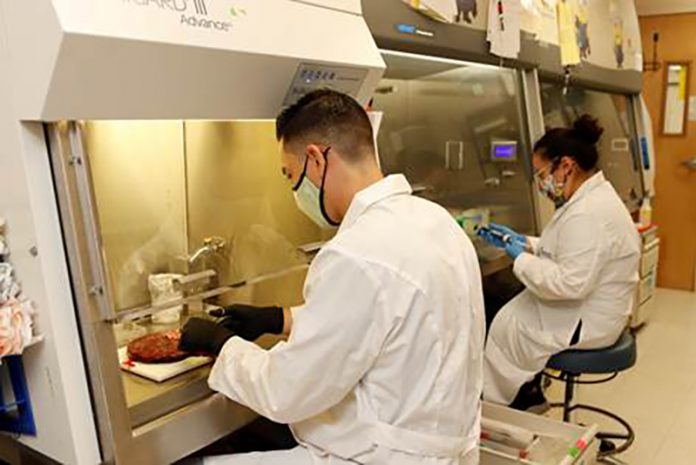Claire Kendal-Wright, PhD, from Chaminade University of Honolulu, argues that when it comes to understanding the normal human parturition mechanisms, danger associated molecular patterns may be part of the answer
Although successful reproduction is fundamental to the survival of the human species, our understanding of the regulation of the many processes central to giving birth are poorly understood. Collectively, these processes terminate in the act of parturition and hopefully, a healthy full-term baby. However, due to the complex nature of parturition, there are many circumstances in which these processes can become dysregulated, and the baby is delivered prematurely. These babies are at risk for a range of neonatal health issues including breathing problems, sepsis, and intraventricular haemorrhage, but they also have a lifetime increased risk of suffering from metabolic disease, cardiovascular disease and diabetes. These health challenges have a significant impact not only on the children and their ability to thrive, but on the lives of their family members.
Pregnancy challenges
The rates of prematurity are high in the U.S. compared to other developed countries (March of Dimes). This is thought to be due to the high rates of obesity, heart disease and the poor health status of women of reproductive age. In addition to this, women in the U.S. are exposed to the stressors of racism and income inequity. Thus, physiological and socioeconomic challenges culminate in cellular stress that influences the health of the mum, the transient tissues that support pregnancy, and the developing foetus.
In the state of Hawai’i, we also have additional challenges due to specific socioeconomic pressures and stressors that are layered onto our unique population. Unfortunately, this means that it is the families from our indigenous Hawaiian populations, those from other Pacific Islands or our Filipino communities that are most at risk. Therefore, although the fundamentals of parturition mechanisms can translate to everyone, the paucity of knowledge from those most at risk significantly hinders progress towards healthier pregnancy outcomes for these communities.
Studying what happens at the end of pregnancy, whether at full-term or preterm is difficult. This is because pregnancy monitoring needs to be minimally invasive and although it is possible to study the tissues of pregnancy, like the placenta and Extraembryonic membranes, obviously this can only be thoroughly performed at the end of the pregnancy when the foetus has been delivered. This means that researchers often need to study mechanisms that would develop over time, with ‘end-point’ material. Using models from other species can be a successful approach for studying some aspects of pregnancy, but as some key pathways appear to be unique to humans, this is not always possible.
Pregnancy research highlights
Despite these challenges, we understand that inflammation is central to parturition, although how this is initiated in tissues that support the growing foetus is not clear. This has been the subject of intensive study, with increasing cellular stress, either through tissue stretching, hypoxia or cellular senescence, currently winning as the most likely mechanism. All of these forms of cell stress happen at the end of a normal pregnancy and are capable of inducing the production of a family of proteins known as Danger Associated Molecular Patterns (DAMPs). This is because these proteins change when a cell needs to signal that something is awry. DAMPs typically have a normal function, but these can be biologically wide-ranging. However, when the cell detects ‘stress’ they move compartment; either from the nucleus to the cell’s cytoplasm, from the cytoplasm to be secreted or they can be liberated from the cell’s supporting extracellular matrix. Therefore, this group of proteins are related through their stress-detecting function, rather than their normal biological function, structure or location.
The reason DAMPs have been gathering so much interest in recent years in the parturition field is that it has been shown in many other disease states, or other cellular stress situations that they can activate receptors of the innate immune system. This, in turn, stimulates the production of inflammatory signals, sensitising the endogenous cells of organs to recent events, and activating immune system cells. In a tissue like the Extraembryonic Membranes that need to weaken and ultimately rupture during parturition, DAMPs produced can initiate inflammation, increasing the production of tissue weakening enzymes and increased programmed cell death.
Thus, DAMPs provide a very real possibility for how inflammation could be initiated at the end of a normal pregnancy in the Extraembryonic Membranes, but also other important tissues, like the cervix and uterus. One of the things that makes this an attractive hypothesis is that not only do many cell stressors cause DAMP production, but many different DAMPs could activate this system. This level of mechanistic convergence may seem unnecessarily redundant, but evolutionarily it makes sense that the pathway that leads to delivery of the foetus has many ways to be activated, after all this literally ensures the survival of the species.
Increase research efforts
Although studying medically indicated preterm birth is extremely important, increasing our research efforts to understand the normal physiology of parturition is necessary to keep improving our ability to manipulate and control its timing. Without fully understanding the normal status quo, how do we determine deviations from this, detect earlier when things are amiss and rescue those that are unfortunately most at risk and suffer the greatest impacts.
Please note: This is a commercial profile
© 2019. This work is licensed under CC-BY-NC-ND.











